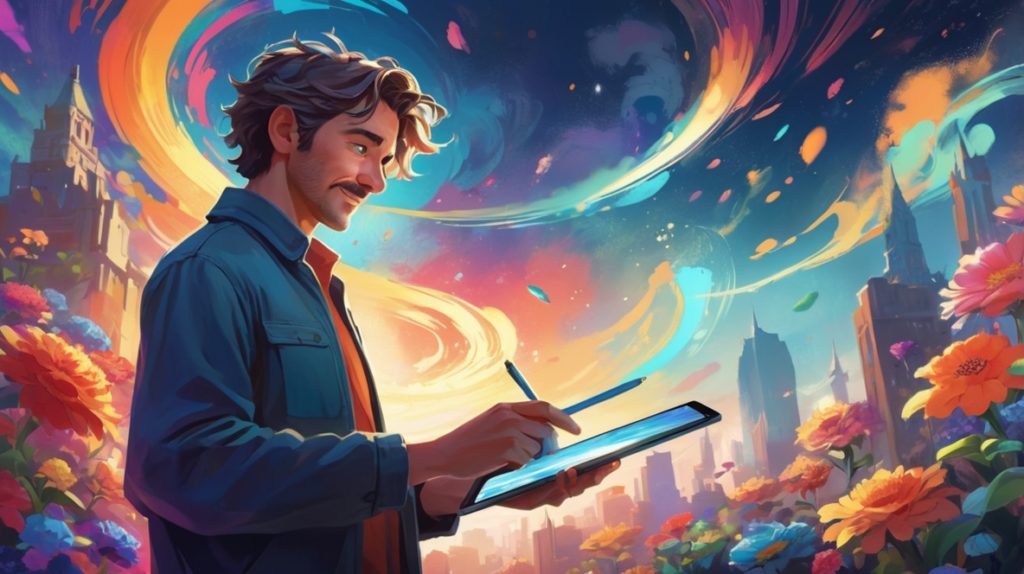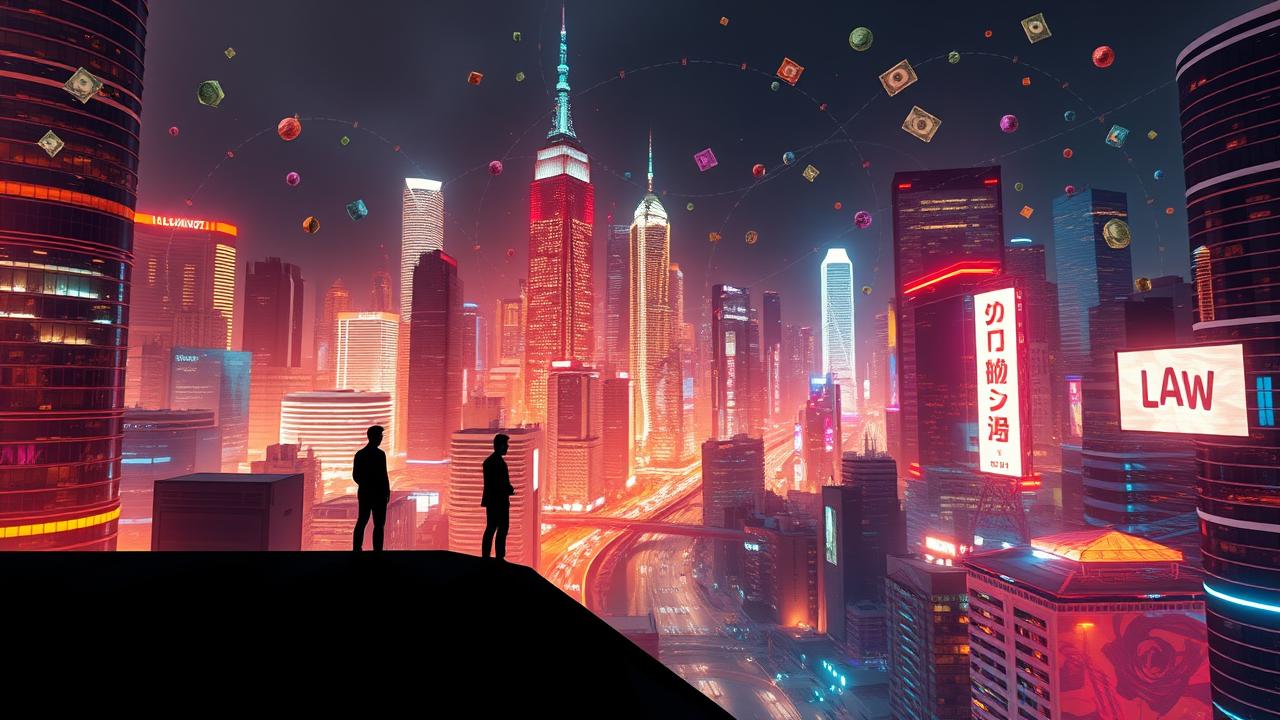Mei Lin thought her creative voice was silenced forever when her family’s traditional Singapore textile workshop closed its doors. Faced with losing not just a business but a piece of her identity, she picked up a secondhand tablet. Hesitantly at first, she started drawing. Now, her vibrant digital illustrations celebrating Singapore’s street food culture aren’t just finding fans online – they’re selling, funding her parents’ retirement, and proving that creativity finds a way. Mei Lin calls it her “new beginning.”
Her journey isn’t just inspiring; it mirrors a seismic shift happening right now. The world of designing digital art for sale isn’t just a niche anymore – it’s a rapidly expanding universe offering incredible opportunities for artists like you. If you’ve ever felt that pull to turn your digital creations into something more, you’re in the right place at the right time.
Quick Guide: What’s Inside?
- The Digital Art Gold Rush: Why Now is Your Moment
- Pixels That Pay: What Kinds of Digital Art Are Buyers Loving?
- Your Creative Toolkit: Essential Gear and Where to Sell
- From Doubt to Digital Dollars: Real Artists Making It Work
- The AI Elephant in the Room: Threat or Powerful Ally?
- Busting Myths: Surprising Truths About Selling Digital Art
- Level Up Your Skills: Must-Read Books & Resources
- Quick Answers to Common Questions
- Your Next Step: Making Your Mark
The Digital Art Gold Rush: Why Now is Your Moment
Let’s talk numbers, because they paint a startling picture. Forget tentative growth – the digital art scene is exploding. The global digital artwork market, estimated at $5.8 billion in 2025, is projected to nearly triple, hitting a staggering $17.72 billion by 2032. That’s not a typo. We’re talking about a compound annual growth rate (CAGR) of 17.3%.
What’s fueling this? A massive shift online. Even the traditional art world is catching on. In 2023, online art sales reached $11.8 billion, representing 18% of the entire global art market. Galleries and auction houses aren’t just dipping their toes in; nearly half of dealers expect online sales to grow even further in 2024.
The message is loud and clear: The barriers to entry are lower than ever, and the potential audience is global. Your digital canvas holds immense commercial possibility.
Pixels That Pay: What Kinds of Digital Art Are Buyers Loving?
So, where’s the sweet spot in this booming market? While NFTs got a lot of hype (and still have their place), the data reveals a perhaps surprising leader: digital painting. This category consistently grabs the largest share of the digital artwork market, accounting for over 25%. Think downloadable prints, custom graphics, illustrations for merchandise – art that bridges the digital and physical realms.
This signals a strong desire for digital art that feels accessible and usable. People want beautiful visuals they can print, frame, use in projects, or wear on a t-shirt. This doesn’t mean other forms aren’t viable (we’ll get to AI art!), but understanding this core demand is key when you’re designing digital art for sale.
Hold Up – So NFTs Are Over?
Not necessarily, but the initial frenzy has calmed. NFTs are now part of a broader digital art ecosystem. Success often depends on building a strong community and offering clear value beyond just the artwork file. They represent one potential avenue, not the only one.
Your Creative Toolkit: Essential Gear and Where to Sell
Okay, let’s get practical. You’ve got the creative spark, but what do you actually need to start selling?
The Essentials:
- A Drawing Tablet & Stylus: Your digital paintbrush. Doesn’t have to be top-of-the-line initially. Brands like Wacom, Huion, or even an iPad with an Apple Pencil work wonders.
- Digital Art Software: The classics include Adobe Photoshop and Illustrator. More accessible options like Procreate (iPad), Clip Studio Paint, Krita (free!), or Affinity Designer are incredibly powerful too. Choose based on your budget and style (raster vs. vector).
- A Decent Computer: Needs enough processing power and RAM to handle your chosen software and large file sizes without making you want to throw it out the window.
Where to Sell Your Masterpieces:
Choosing the right platform feels overwhelming, right? Here’s a quick rundown of common choices:
- Marketplaces like Etsy & Gumroad: Great for beginners. Offer built-in audiences looking for prints, digital downloads, brushes, templates, etc. You control your listings and pricing.
- Art-Specific Platforms like ArtStation & Redbubble: Cater more directly to artists and art buyers. ArtStation is Portfolio-focused, while Redbubble handles print-on-demand.
- Direct Sales via Social Media/Your Website: Instagram, TikTok, Pinterest can be powerful sales tools if you build a community. Selling directly means higher profit margins but requires more marketing effort. Surprisingly, direct social media engagement often outperforms traditional galleries for many digital artists.
- NFT Marketplaces (e.g., Foundation, OpenSea): If you’re exploring the crypto art space. Requires understanding blockchain technology and gas fees.
As digital artist and educator Najwa Zebian wisely points out:
“Artists who can combine technical know-how with compelling storytelling and audience engagement will thrive in this new era. It’s not enough to master the software—you need to understand your market and community.”
— Najwa Zebian, Digital Artist and Educator (via Zarastro Art)
The “best” platform depends on your art style, target audience, and how much control you want. Don’t be afraid to experiment!
From Doubt to Digital Dollars: Real Artists Making It Work
Remember Mei Lin, turning heartbreak into vibrant illustrations? Her story of reinvention is powerful, but she’s not alone. The path of designing digital art for sale is often paved with self-doubt, burnout, and fear. Let’s meet a couple more artists navigating this world:
- Diego Ramos (Mexico City): A 29-year-old teacher battling burnout, Diego started experimenting with AI art tools late at night. He wrestled with a common fear: Was this even ‘real’ art? Was he somehow cheating? The stakes felt high – his sense of self-worth and a deep desire for creative validation. When his AI-assisted portraits got featured by an online marketplace, the positive feedback meant everything. “People wrote to tell me my work moved them,” he shared. “That meant more than the sales.” For Diego, selling his digital art became proof that his creative voice, even enhanced by new technology, mattered.
- Priyanka Bhatt (Mumbai): As a 35-year-old engineer and mother, Priyanka secretly created digital paintings for years. She feared judgment from her traditionally-minded family, worried they’d see her art as an unserious hobby. Breaking into the art world felt impossible. The stakes were social acceptance versus self-expression. Taking a leap, she started selling her art as NFTs to an international audience. The success was empowering, leading to a guest spot on a local podcast. Her message now? “You don’t need to ask permission to create. Selling my digital art gave me confidence to share my voice.”
Mei Lin’s reinvention, Diego’s quest for validation, Priyanka’s journey to overcome fear – these aren’t just anecdotes. They reflect the real emotional landscape many digital artists navigate. Technical skill is one thing; finding the courage to put your work out there is another battle entirely.
The AI Elephant in the Room: Threat or Powerful Ally?
You can’t talk about digital art in 2025 without talking about Artificial Intelligence. Tools like Midjourney, Stable Diffusion, and DALL-E are evolving at lightning speed, and frankly, it can feel a bit… terrifying. Is AI replacing artists? Is it even “real” art?
Let’s park the philosophical debate for a second and look at the reality. The AI in art market is already valued at $3.2 billion in 2024 and is predicted to explode, potentially growing more than tenfold by 2033. That’s a CAGR that could hit nearly 37%!
But Seriously, Is AI Art ‘Real’ Art Though?
That debate’s raging, but here’s the deal for artists trying to sell their work: AI tools are here, and the art world is taking notice. Galleries and prize committees are increasingly recognizing AI-assisted work. Focus less on rigid labels and more on how these tools can potentially enhance your unique creative vision, like Diego found.
Think of AI not as a replacement, but as a potentially powerful collaborator or tool in your arsenal. It can help with:
- Idea Generation: Breaking through creative blocks by visualizing concepts quickly.
- Style Exploration: Experimenting with aesthetics you might not have considered.
- Efficiency: Assisting with repetitive tasks or generating background elements.
- New Forms: Creating entirely new types of generative or interactive art.
Claire McAndrew, Director of Art Economics at Art Basel & UBS, puts it this way:
“Digital art’s explosive growth is not just a temporary trend—it’s a fundamental transformation of how we make, distribute, and collect art. The integration of generative AI and blockchain tech opens creative vistas that were unimaginable five years ago.”
— Claire McAndrew, Director of Art Economics at Art Basel & UBS
Ignoring AI might mean missing out on significant opportunities. The key is figuring out how, or if, these tools fit into your creative process ethically and effectively.
Busting Myths: Surprising Truths About Selling Digital Art
The online narrative about designing digital art for sale is full of myths. Let’s bust a few with some surprising facts:
- Myth: You need a big gallery or platform to succeed.
Reality: Many artists kill it with direct sales via social media DMs and building tight-knit communities. Engagement often beats massive platforms.
- Myth: AI art is universally snubbed by the “serious” art world.
Reality: Wrong! AI-generated and AI-assisted pieces are increasingly winning prizes and getting gallery shows. Acceptance is growing faster than you think.
- Myth: Successful digital artists make all their money from selling art files/prints.
Reality: Most diversify! Fewer than 15% rely solely on art sales. The rest supplement with courses, merch, commissions, or client work. Think portfolio career, not just print sales. (Remember Priyanka, the engineer/artist?)
- Myth: NFTs and complex video art are the biggest money-makers.
Reality: Nope. The fastest-growing segment? Good old digital paintings offered as downloadable prints and custom graphics. Accessibility still rules.
- Myth: The digital art market is dominated by US/European buyers.
Reality: Big sales are increasingly coming from emerging markets. The collector base is globalizing, opening doors for artists everywhere.
Knowing these truths helps manage expectations and focus your strategy. It’s not about overnight riches; it’s about smart positioning, diverse income streams, and authentic connection.
Level Up Your Skills: Must-Read Books & Resources
Feeling inspired but need more guidance? Here are some fantastic resources to deepen your knowledge:
Essential Reading:
- Digital Art by Christiane Paul: A solid overview of digital art history, techniques, and market context.
- Make Your Art No Matter What by Beth Pickens: Perfect for tackling the emotional and practical hurdles of sustaining a creative practice, especially when money’s involved.
- Art, Inc.: The Essential Guide for Building Your Career as an Artist by Lisa Congdon: Packed with business advice tailored for creatives, including online sales strategies.
Authoritative Reports & Insights:
- The Art Basel and UBS Art Market Report (Annual): The gold standard for understanding global art market trends, including deep dives into online sales and collector behavior. Look for the latest edition.
- Artsmart.ai Blog & Reports: Excellent source for stats and analysis specifically on the AI in art market.
- Coherent Market Insights Reports: Offers detailed market breakdowns by art type, region, and price point for the digital artwork sector.
Investing time in learning the business side is just as crucial as honing your artistic skills.
Quick Answers to Common Questions
What’s the most profitable type of digital art to sell online?
Currently, digital paintings and custom illustrations sold as downloadable files, prints, or applied to merchandise tend to be the most popular and consistently profitable category. While other forms exist, this accessible format has broad appeal.
Which platforms are best for selling digital art?
There’s no single “best.” Etsy and Gumroad are great for downloads and direct sales. ArtStation caters to concept artists and illustrators. Redbubble handles print-on-demand. Many artists find success combining a platform with direct sales via social media. Research which aligns best with your art style and audience.
How much can new digital artists really earn?
It varies wildly. Some start making a few hundred dollars a month relatively quickly, while others take longer. Most digital artists don’t rely solely on art sales initially; they supplement with commissions, client work, teaching, or selling related products like brushes or tutorials. Be patient and build diverse income streams.
Is it legal to sell AI-generated or AI-assisted art?
Generally, yes, especially if you’re using tools where you have commercial rights to the output. Key considerations are the terms of service of the AI platform and ensuring you’re not infringing on existing copyrights with your prompts or source images. The legal landscape is evolving, so stay informed.
How do I price my digital art?
Pricing is tricky! Consider factors like your experience level, the time invested, the complexity of the piece, usage rights (personal vs. commercial license), and what similar artists in your niche charge. Start somewhere, test different price points, and adjust based on demand and feedback.
How do I protect my art from being stolen online?
Use watermarks (visible but not overly distracting) on preview images, only upload lower-resolution versions for display, and clearly state copyright ownership. Selling through established platforms offers some built-in protection. For significant works, consider formal copyright registration in your country.
What are the top mistakes new digital art sellers make?
Common pitfalls include: underpricing their work significantly, not actively marketing or building an audience (expecting buyers to just find them), ignoring valuable customer feedback, and failing to capture email addresses to build a direct connection with potential buyers.
Your Next Step: Making Your Mark
Okay, deep breath. This world of designing digital art for sale is huge, exciting, and yes, maybe a little intimidating. But you don’t need to conquer it all at once. Remember Mei Lin, Diego, and Priyanka? Their journeys started with a single step, often fueled by uncertainty but driven by the undeniable urge to create and connect.
So, what’s your next small step? Maybe it’s:
- Sketching out that idea that’s been buzzing in your head, inspired by Mei Lin’s story.
- Researching just one platform mentioned here that feels like a potential fit.
- Trying out a free AI art tool, just to see what happens, channeling some of Diego’s experimental spirit.
- Sharing one piece of your art online, even if it feels scary, like Priyanka did.
- Checking out one of the recommended books or reports to learn more.
The digital canvas is vast and waiting. The market is booming. Your unique voice, your style, your stories – they matter. Don’t let fear or perfectionism hold you back. Start where you are, with what you have. Go make your mark.
(P.S. Keep an eye out for helpful resources like platform comparison guides or starter checklists – sometimes a little structure makes taking that first step easier!)







